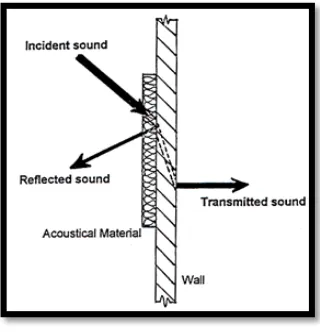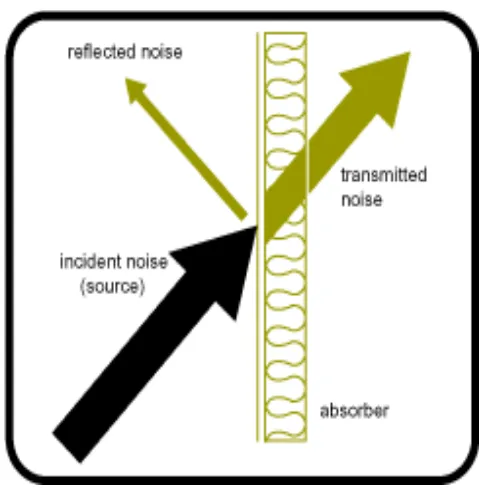UNIVERSITI TEKNIKAL MALAYSIA MELAKA
PREPARATION OF SPENT TEA LEAVES FILLED
POLYURETHANE COMPOSITES FOR SUSTAINABLE SOUND
ABSORBING MATERIALS
This report submitted in accordance with requirement of the Universiti Teknikal Malaysia Melaka (UTeM) for the Bachelor Degree of Manufacturing Engineering
(Engineering Materials) (Hons.)
by
CHIA POOI CHING
B050910119 890803-08-5712
UNIVERSITI TEKNIKAL MALAYSIA MELAKA
TAJUK: Preparation of Spent Tea Leaves Filled Polyurethane Composites for Sound
Absorbing Materials
SESI PENGAJIAN: 2012/13 Semester2
SayaCHIA POOI CHING
Mengaku membenarkan Laporan PSM ini disimpan di Perpustakaan Universiti Teknikal Malaysia Melaka (UTeM) dengan syarat-syarat kegunaan seperti berikut:
1. Laporan PSM adalah hak milik Universiti Teknikal Malaysia Melaka dan penulis. 2. Perpustakaan Universiti Teknikal Malaysia Melaka dibenarkan membuat salinan untuk
tujuan pengajian sahaja dengan izin penulis.
DECLARATION
I hereby, declared this report entitled “Preparation of Spent Tea Leaves Filled Polyurethane Composites for Sustainable Sound Absorbing Materials” is the results
of my own research except as cited in references.
Signature : ……….
Author’s Name : ………
Date : ……… CHIA POOI CHING
APPROVAL
This report is submitted to the Faculty of Manufacturing Engineering of UTeM as a partial fulfillment of the requirements for the degree of Bachelor of Manufacturing Engineering (Engineering Materials) (Hons.). The members of the supervisory committee are as follow:
………
(PROF. DR. QUMRUL AHSAN)
………
ABSTRAK
ABSTRACT
DEDICATION
ACKNOWLEDGEMENT
First and foremost, I would like to express my utmost gratitude to my supervisor, Prof Qumrul Ahsan for his guidance, advice, concern, understanding and patience throughout the research period. His supervision has helped a lot in the progression of this final year project. I am indeed very grateful to be under his supervision. Besides, I would like to express my appreciation to my co-supervisor, Miss Chang Siang Yee, who has assisted me in ensuring a successful flow throughout the completion of this final year project. In addition, I would also like to express my appreciation to Dr. Azma Putra and his master student, En. Sajidin, as they had guided me in conducting the impedance tube measurement for my final year project.
Not to forget, thanks to the lab technicians involved from both Faculty of Manufacturing Engineering and Faculty of Mechanical Engineering for sharing their experiences, skills, opinions, advices and guidance in handling the equipments throughout the study.
3.8 Flow Chart Methodology 41
CHAPTER 4: RESULTS & DISCUSSION 42
4.1 Raw Materials Characterization 42
4.1.1 Dimensional Measurement 43
4.1.2 Particle Size Analyser (PSA) 44
4.1.3 Density Measurement 46
4.1.4 Fourier Transform Infrared Spectroscopy (FTIR) 47 4.1.5 Scanning Electron Microscopy (SEM) 54 4.2 Samples Characterization 57
4.2.1 Density Measurement 58
4.2.2 Scanning Electron Microscopy (SEM) 62
4.3 Impedance Tube Measurement 66
CHAPTER 5: CONCLUSIONS & FUTURE WORK 74
5.1 Conclusions 74
5.2 Future Work 76
REFERENCES 77
APPENDICES
LIST OF TABLES
2.1 A Brief Summary of Flexible and Rigid Polyurethane Foams 13
3.1 Properties of Polyol and Isocyanate Components 26 3.2 Characteristics of Flexible Polyurethane (PU) Foam 26 3.3 Comparison of Polyurethane (PU) Composites and their Relative Codes 33
4.1 Minimum, Maximum, and Average Length Values of Three Different 43 Grades of Spent Tea-Leaf Fibers
4.2 Minimum, Maximum, and Average Diameter Values of Three Different 43 Grades of Spent Tea-Leaf Fibers
4.3 Minimum, Maximum, and Average Particle Sizes Values of Three Different 45 Grades of Spent Tea-Leaf Fibers
LIST OF FIGURES
2.1 Acoustic Materials. 6 2.2 Description of Function of Sound Absorbing Materials. 7 2.3 Typical Variation of Sound Absorbing Coefficient for Different Absorbers. 8 2.4 Three main types of Porous Sound Absorbing Materials. 9 2.5 (a) Reactants Used for Polyurethane (PU) and (b) Polyurethane (PU) 11 2.6 Scanning Electron Micrographs of (a) Closed Porous Cells of Rigid 12
Polyurethane Foams and (b) Open Porous Cells of Flexible Polyurethane Foams.
2.7 Influences of Open Porosities of FPF on the Acoustic Absorption 14 Coefficients: C6–16.0 % Open Porosity, C7–25.0 % Open Porosity,
C8–83.0 % Open Porosity, and C9–88.6 % Open Porosity
2.8 Two Leaves and a Bud of Tea Plant Camellia Sinensis 16 2.9 Composition of Fresh Tea Flush (% dry weight) 17 2.10 Cellulose, Hemicelluloses, and Lignin Exist in Lignocellulosic Fiber 18 2.11 Sound Absorption of Three Different Layers of TLF Waste Materials 20 2.12 Sound Absorption Coefficient Values of Polyurethane and Tea-Leaf 23
Fibers Reinforced Polyurethane Composites with the Composition of 8%, 16%, and 24%
3.1 Polyurethane (PU) Foam 25
3.3 Vacuum Drying Oven 28 of Spent Tea-Leaf Fiber under Objective Lens Magnification x100
4.7 Morphology of (a) BM-FAE, (b) SW-BHE, and (c) FIBER-FAE Grade 56 of Spent Tea-Leaf Fiber under Objective Lens Magnification x300
In the As-Received Form such as BM-FAE, SW-BHE, and FIBER-FAE with the Composition of 4% Mixed Polyurethane Composites
4.9 Measured and Theoretical Densities Values of Spent Tea-Leaf Fibers 61 In the Granulated Form such as BM-FAE, SW-BHE, and FIBER-FAE
with the Composition of 4%, 8%, 12%, and 16% Mixed Polyurethane Composites
4.10 Morphology of Polyurethane (PU) Cell Structure under Objective Lens 62 Magnification x50
4.11 Morphology of Cell Structure of (a) 4% As-Received, (b) 4% Granulated, 63 and (c) 16% Granulated BM-FAE Grade of Spent Tea-Leaf Fiber Mixed
Polyurethane Composite under Objective Lens Magnification x50
4.12 Micrograph of Cross-sectional SEM Images of Polyurethane Foam with 64 Spent tea-Leaf Fibers Additives under Objective Lens Magnification
(a) x200 and (b) x250
4.13 Micrograph of Cells Size Measurement of Polyurethane Foam for 65 PU/G BM-FAE4 Cell Structure under Objective Lens Magnification x200
4.14 Sound Absorption Coefficient Graph of (a) 4% As-received and (b) 4% 66 Granulated BM-FAE Grade of Spent Tea-Leaf Fiber Mixed Polyurethane
Composite
4.15 Average Values of Maximum Absorption Coefficients of Polyurethane 68 and Spent tea-Leaf Fibers in the As-Received Form such as BM-FAE,
SW-BHE, and FIBER-FAE with the Composition of 4% Mixed Polyurethane Composites
4.16 Average Values of Maximum Absorption Coefficients of Spent tea-Leaf 68 Fibers in the Granulated Form such as BM-FAE with the Composition
of 4%, 8%, 12%, and 16% Mixed polyurethane Composites
Fibers in the Granulated Form such as SW-BHE with the Composition of 4%, 8%, 12%, and 16% Mixed polyurethane Composites
4.18 Average Values of Maximum Absorption Coefficients of Spent tea-Leaf 69 Fibers in the Granulated Form such as FIBER-FAE with the Composition of 4%, 8%, 12%, and 16% Mixed polyurethane Composites
4.19 Average Values of Maximum Absorption Coefficients of Spent tea-Leaf 71 Fibers in the As-Received and Granulated Form such as BM-FAE, SW-BHE, and FIBER-FAE with the Composition of 4% Mixed Polyurethane Composites 4.20 Average Values of Maximum Absorption Coefficients of Spent tea-Leaf 72
LIST OF ABBREVIATIONS, SYMBOLS AND
NOMENCLATURE
ASTM - American Society for Testing and Materials
BM - Broken mat
EHT - Extra High tension
FPF - Flexible Polyurethane Foams
FTIR - Fourier Transform Infrared Spectrocospy
–OH - Hydroxyl Ion
LaB6 - Lanthanum hexaboride
MP - Mechanical Pulp
mg KOH/g - Milligram of potassium hydroxide per gram
PMCs - Polymer Matrix Composites
CHAPTER 1
INTRODUCTION
This chapter describes the background of studies, the problem statements, the objectives and as the scopes of the studies.
1.1 Background Study
In 1987, the World Commision on Environment and Development developed a definition of sustainability which became widely known as the Brundtland Report. It stated that
At present, green technology is widely used to produce materials from agriculture products as a substitute to synthetic fibers and wood-based materials (Mohd Nor et al., 2004). Organic natural fibers from agriculture are increasingly being investigated for various usages in many structural and non-structural applications such as automotive lining components and acoustic absorption barrier. For instance, coir fibers are the natural fibers used to replace synthetic fibers and wood-based materials for absorbing sound (Zulkifli et al., 2008). The introduction of the natural fibers as an alternative for glass-or mineral-fiber materials used as commercially available sound absorption materials in the building construction industry is due to the geometry and properties of the fibers. The plant-based fibers have a hollow and cellular nature and thus perform well as acoustic and thermal insulators (Zulkifi et al., 2008 and Chand and Fahim, 2008). Besides, these fibers are inexpensive, renewable and available in abundance, non-abrasive, does not give rise to health and safety issues during processing and handling, as well as light weight (Mohd Nor et al., 2004 and Chand and Fahim, 2008).
1.2 Problem Statement
1.3 Objectives
The aims of this research include:
1. To characterize physical and chemical properties as well as morphology of various grades of spent tea leaves.
2. To fabricate a green sound absorption structure made of spent tea leaves filled polyurethane composite with different grades and loadings of the spent tea leaves through open molding technique.
3. To investigate physical and sound absorption behavior as well as morphology of spent tea leaves reinforced polyurethane composite as sound absorbing material.
1.4 Scopes
CHAPTER 2
LITERATURE REVIEW
A literature review on previous research work in various areas which is relevant to this research is presented in this chapter.
2.1 Acoustic Materials
hearing protection, installation of sound barrier and implementing sound absorption panel (Mahzan et al., 2010).
Efforts to control noise and vibration in a wide range of mechanisms and devices inevitably require the use of passive acoustical materials, as shown in Figure 2.1. Conventionally speaking, acoustic materials are those materials designed and used for the purpose of absorbing sound that might otherwise be reflected. The acoustic materials work by two processes: absorption of sound energy, which dissipates sound as heat energy, and reflection, which reflects noise away from a location where silence is desired (Ahmad and Wahid, 2011). In the science of acoustical control, two classes of acoustical treatments are used to address airborne noise – noise is propagated through the air, namely barriers and absorbers. Likewise, two classes of acoustical treatments are used to address structure-borne noise – noise is propagated through the air after being radiated by a structure, namely isolators and dampers (Parikh et al., 2006). In general, effective noise control incorporates the use of both barriers and absorbers for airborne noise and both isolation and damping for structure borne noise (Ahmad and Wahid, 2011).
Figure 2.1: Acoustic Materials.
Currently, commercially available sound absorption materials for acoustic treatment used in the building construction industry consisted of mineral fiber materials (Zulkifil et al., 2008). The European building insulation market of a value of approximately 3.3 billion Euros has been estimated to: mineral wool (glass): 27%, mineral wool (stone): 30%, foam plastics: 40%, and other materials: 3% (Asdrubali, 2006).
2.1.1 Sound Absorbing Materials
Arenas and Crocker (2010) claimed that sound-absorbing materials undergo their function by absorbing most of the sound energy striking them and reflecting very little, making them very useful for the control of noise, as shown in Figure 2.2.
Figure 2.2: Description of Function of Sound Absorbing Materials.

